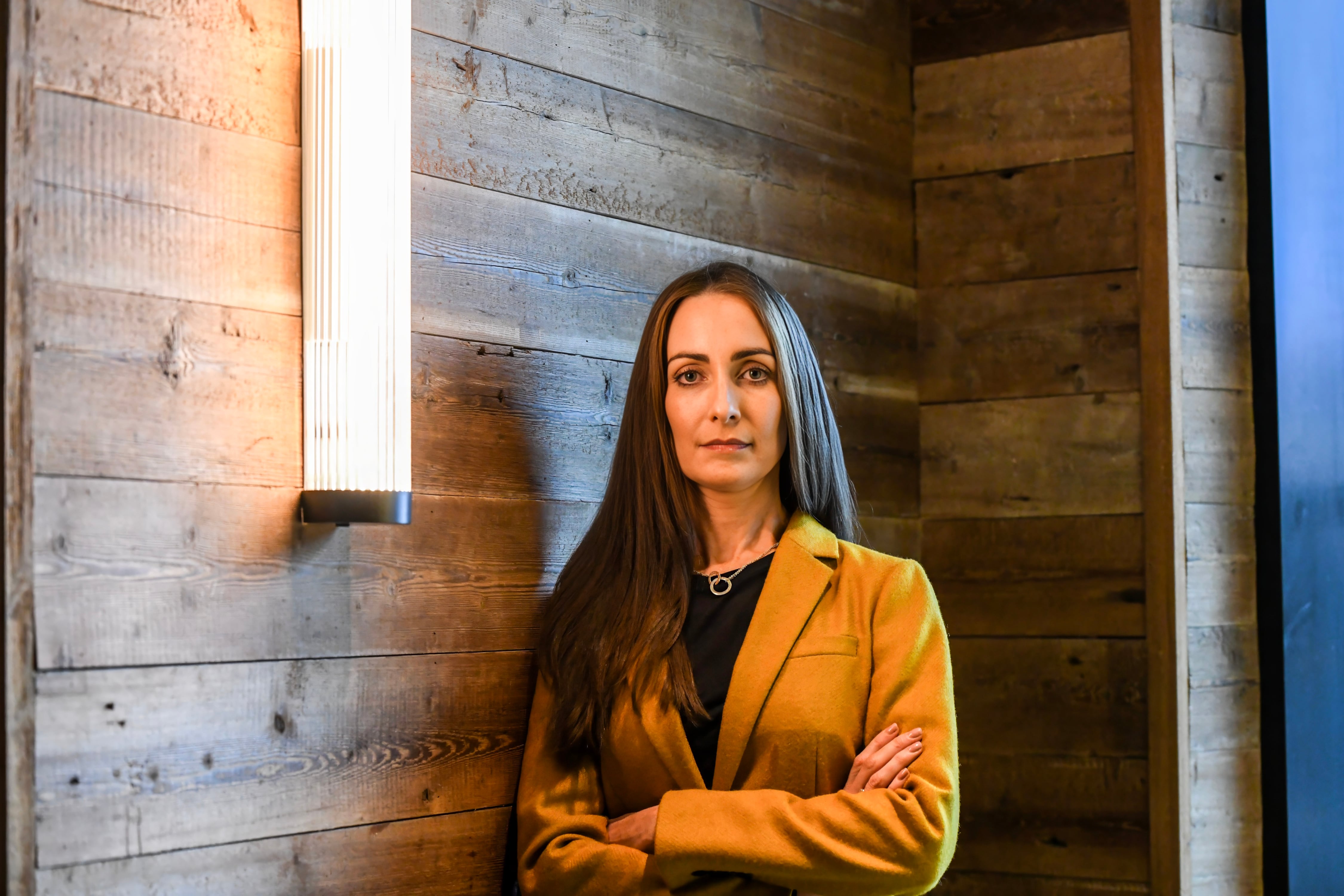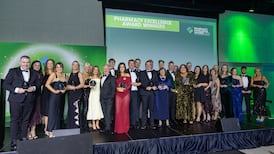The Ibec HR Leadership Summit 2023 took place on Wednesday 25 October at The Dublin Royal Convention Centre. This year’s Summit focused on the theme of intelligent workplaces and explored the important roles that psychological safety in teams, AI, and talent intelligence have to play in creating sustainable, healthy, and productive workplaces as well as in delivering competitive advantage to organisations seeking to recruit and retain top talent in an exceptionally tight labour market.
Hosted by TV and radio presenter Anton Savage, the Summit featured expert speakers from Ireland and overseas who addressed the key themes and discuss their relevance to the modern workplace.
“With Ireland’s economy at full employment, businesses are increasingly turning to transformative technologies to help them meet their talent needs,” says Maeve McElwee, executive director, Employer Relations with Ibec. “This translated into exceptional demand for places at this year’s Summit and the event was sold out several weeks in advance. We were delighted to welcome HR leaders from across Ireland as well as our outstanding line-up of speakers to what proved to be a lively and informative event.”
The opening session of the Summit examines how AI is changing the world of work, opening up new opportunities, and creating new risks. Keynote speaker Tomas Chamorro Premuzic, chief innovation officer with Manpower Group and Professor of Business Psychology at UCL and Colombia University, says we should put aside our fears about being replaced by AI and look instead at how we can be improved by it.
READ MORE
“The paranoia in relation to AI is based on a binary theory that pitches us against the machines,” he says. “That’s a fallacy. AI is a human invention and is therefore an extension of human intelligence. The productive thing to do is not to worry if AI is smarter than us, but to think about how we can become smarter by using AI. The average human today is not particularly smarter than the average human was during the Renaissance or the Enlightenment. But if you give a present-day human a smartphone and wi-fi they will outperform any human from the Enlightenment. Not even Voltaire could keep up.”
He is not impressed by alarmist predictions of widespread job destruction. “They are not based on any data,” he says. “They are aimed at creating sensationalist and click-baity headlines. In previous technological revolutions we saw the same pattern repeated – short term disruption followed by massive job creation. The problem is that people who have lost jobs can’t necessarily access new ones. A store manager can’t easily become a data scientist. AI changes the skills needed for the same job and we need to add value through other things. Relationships, people skills, EQ, curiosity are all much more important now. We need to look at how work and AI can be merged. We need to reimagine work and how it is organised.”
Ultimately, the challenge is to equip people with the skills required to thrive in this new world of work. In short, to rehumanise work so that the AI age is also the human age.
Talent Intelligence (TI), the tool that is empowering HR and business leaders to make more informed strategic decisions on workforce planning and talent management through data analytics, is seen as the next big opportunity for organisations competing in a tight labour market.
Meta McKinney, Global Talent Intelligence manager with NVIDIA defines TI as the creative use of external labour market data, internal business data, competitive intelligence, along with other datasets to help drive business and talent strategy.
“There is no one way to look at it,” she notes. “It depends on the problem you’re trying to solve. It’s about creatively digging into data sources to get perspectives and insights that will help your business and talent strategy. It changes with context.”
Talent is the most expensive and important piece of any business organisation, she adds. “Talent intelligence is about looking for insights to become better around talent. It’s about looking at how we hire, who we hire, and how and who we retain. It’s also about why we are hiring people. We want to build a better workforce. We also know that it’s really difficult to hire the people we need. Everyone is working off the same datasets. Everyone is going onto LinkedIn, and they are all looking at the same candidates.”
That requires organisations to understand why they are the employer of choice for certain candidates. “We need to understand the needs of candidates and differentiate ourselves,” says McKinney. “We need to look at how we gain sustainable advantage. We need to know who we need and how we make them want to come to work for us.”
Proactive candidate search is critically important. Nvidia doesn’t wait for people to apply for jobs. “We typically source passive candidates,” she says. “People who are not looking to change job and not even thinking of moving. If we are all sourcing from the same candidate pool, we have to think differently to find candidates that others aren’t. That means creative digging. Finding people who are not on LinkedIn and finding ways to reach out to those people? We look at what’s meaningful and interesting to a group of candidates. Need to understand what interests them, what professional groups they may belong to, what social media they use, where they are in the world, where are they employed.”
Having identified who and where they are it’s then a question of making an attractive offer. “We make sure we cover the things that are important and getting a response. It’s all about getting an initial response and engaging with the candidate from there. Talent intelligence is about data but it’s really about creative problem solving.”
Hiring the right people is just the beginning, however. Henrik Bresman, Professor of Organisational Behaviour at Instead, explained how organisations often fail to realise the benefits of having talented diverse workforces due to the absence of psychological safety in the workplace. Psychological safety has been defined by one of his co-authors, Harvard Professor Amy Edmondson, as “the belief that one can speak up without risk of punishment or humiliation”.
“People generally understand that having people from different backgrounds brings different perspectives and ideas and is better for innovation and so on,” he says. “But it comes with challenges for communication and co-ordination across those differences. If you don’t have psychological safety the people sit quietly in the corner, and you don’t get those benefits.”
Building psychological safety is not a simple undertaking, however. “It’s easy to say, but difficult to do,” says Stenson.
He spoke told the summit about a three step model which begins with setting the context, moves on to adding the personal touch, and finishes with productive response.
The first step is to set the context in terms of the level of uncertainty and expected failure rates involved. “A car assembly plant has very little uncertainty and very low expected failure rates. It is a very well oiled machine and a well controlled environment. At the other extreme you have something like drug development where you expect failures. Ninety-five per cent of projects end in failure and you they are needed to learn for the future. If you can’t agree on where you are on this continuum you have no chance of building psychological safety. You have to agree on how much failure to expect.”
The second step involves inclusive leadership. “You need to reach out, invite participation, include people, tell them that you need to hear from them and learn from them. That decreases the psychological cost of speaking up and increases the psychological cost of staying silent.”
The third is positive and productive response. “If everything people say is gold, that’s great. But a lot of the time that will not be the case. But if you say something is dumb, you have destroyed the opportunity to build psychological safety. You have to respond as positively as you can to encourage future participation.”
That doesn’t preclude robust debate, however. “It is not about being polite or nice. It’s about what is appropriate in different contexts. A misunderstanding of psychological safety is that it means you can’t pull people up on performance standards. That is not the case at all. It is not a balancing act between the two. You can have a workplace with high pressure to perform but low on psychological safety. That makes people afraid to share and collaborate. The highest performance zone is where you are high on both pressure to perform and psychological safety, that’s particularly the case in high uncertainty contexts.”
Other topics covered at the Summit included a blueprint for overcoming skills shortages, the CHRO’s role in driving transformation, and how to prepare for the intelligent workplace.
“This year’s summit highlighted the increasingly important role played by CHROs in today’s organisations where talent and skills have become the currency of success,” says Maeve McElwee. “Indeed, there are very few areas of business have become as complex and as centrally important as those of human resources, employee relations and employment law. As a result, we are experiencing very high demand for services of the Ibec HR Knowledge Centre which provides specialist advice and support to our members on all aspects of employee relations and employment law.”
Ends













